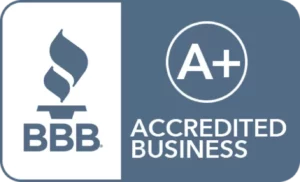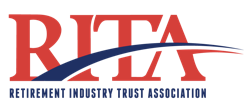Regular IRA, Traditional IRA, Roth IRA, Self-Directed IRA, SEP IRA, SIMPLE IRA. There are many different options out there for Individual Retirement Accounts. Some are for small businesses; some offer tax-free withdrawals and others give a nice tax deduction. But the one that really stands out is the Self-Directed IRA.
- A Self-Directed IRA puts YOU in charge of all investment decisions
- With Checkbook Control, you can make investments at your leisure
- Properly diversify your plan by investing across multiple asset classes
You might ask, aren’t all IRAs Self-Directed? In a sense, they are, since you get to choose your investments. But try investing in real estate, precious metals or hard money loans with an IRA from your local bank. They’ll say no once they finish laughing at you!
Here, we’ll explain what a Self-Directed IRA really is and how it can supercharge your retirement savings. It’s a strategy savvy investors utilize, but regular folks don’t know much about. With just a little bit of knowledge and some money to spare, anyone can have a comfortable retirement.
What is a Self-Directed IRA?
A Self-Directed IRA is a regular IRA that has a world of investment opportunities. No longer are you limited to what your local bank or the popular online sites offer you. You’re not stuck with traditional investments, such as stocks, bonds and mutual funds. Typical financial institutions make money off the investments they push on you, along with fees. They don’t make money if you invest in nontraditional assets. Therefore, they don’t off them to you.
Moreover, most of the popular institutions say they offer self-directed IRAs. Be sure to read the fine print though! They also limit your investment opportunities. Further, you usually need to get permission to make an investment. Not exactly self-directed is it? Real self-direction doesn’t limit it your investment choices, nor does it require permission. After all, it’s your money and you should invest it in whatever YOU see fit. With a Self-Directed IRA, you can invest in almost anything. Some of the most popular Self-Directed IRA investments include real estate, cryptocurrency, precious metals, private placements, venture capital investments, farmland, wine, and more! Best of all, you can still invest in traditional investments and maintain total control over your retirement.
Related: Popular Self-Directed IRA Investments
Roth IRA vs Self-Directed Roth IRA
A Roth IRA allows IRA holders to enjoy tax-free distributions. This is because the Roth IRA was funded with after-tax dollars, meaning you don’t receive an upfront tax-break, but all income and gains on your investment will be tax-free when you take a qualified distribution (in order for a Roth IRA distribution to qualify, the IRA must be opened for at least five years, and the IRA holder must be age 59 1/2 or older).
Many retirement investors use their Roth IRA to purchase traditional investments, like stocks, bonds, CDs, mutual funds and the like. The breadth of investments you can make with your IRA is typically determined by the company that holds the account. For example, if your Roth IRA is held by a bank or financial institution, you will most likely only be limited to make tax-free traditional investments.
Before deciding what type of Self-Directed IRA to open, it is important to consider the difference between a traditional IRA and a Roth IRA. With a traditional IRA, there are no income limits. However, with a Roth IRA, you have to meet the income requirements. If you make too much money, you may need to consider a Backdoor Roth IRA.
Another thing that needs to be considered before selecting a traditional IRA or a Roth IRA is RMDs. Required Minimum Distributions occur when the individual reaches 73. If you have a traditional IRA, regardless of if it is Self-Directed, you must begin taking RMDs at 73. Failure to take an RMD can result in tax consequences. With a Roth IRA, you do not need to take RMDs. Instead, you can begin taking withdrawals at 59 1/2 as long as the IRA has been open for at least five years. Furthermore, Roth IRA’s are funded with after tax money. As a result, you will not pay taxes on your withdrawals. While there are benefit and limitations to a traditional and a Roth IRA, it is important that you consider what type of IRA is right for you!
Benefits of a Self-Directed IRA
Invest in What You Understand
Americans became frustrated with the equity markets after the 2008 financial crisis. Thankfully, we have seen the financial markets rebound since then. Yet, many investors are still somewhat shell-shocked from the market swings. They are not 100% sure what goes on in Wall Street and how it all works.
Real estate, for comparison, is often a more comfortable investment for the lower and middle classes because they grew up exposed to it. Whereas the upper class are more familiar with Wall Street and other securities.
We always hear people talk about the importance of owning a home, and the amount of money one can make by owning real estate. From Donald Trump to reality TV, real estate is fast becoming mainstream and a trusted asset class for Americans.
Of course, it’s not without risk, but many investors feel more comfortable buying and selling real estate than they do stocks. With a Self-Directed IRA LLC, you can make real estate and other alternative asset investments tax-deferred or tax-free with the Roth IRA. Inflation Protection
Related: How to Open a Self-Directed IRA Online
Diversification
Most Americans have an enormous amount of financial exposure to the financial markets. Whether it is through retirement investments, such as IRAs or 401(k) plans, or personal savings, many of us have most of our savings connected to the stock market.
In fact, over 90% of retirement assets are invested in the financial markets. Investing in non-traditional assets, such as real estate, offers a form of investment diversification from the equity markets. With a more diversified Self-Directed IRA, it is less likely that your assets move in the same direction. However, diversification does not assure profit or protect against loss. Nevertheless, the use of non-traditional asset classes can help protect your portfolio when the market is down and prevent you from losing more than the market. Invest in What You Understand. Learn more about Self-Directed IRA Myths here.
Inflation Protection
Rising food and energy prices, along with high federal debt levels and low interest rates have recently fueled new inflationary fears. As a result, some investors may look for ways to protect their portfolios from the ravages of inflation.
It is a matter of guesswork to estimate whether these inflation risks are real. For some retirement investors, protecting retirement assets from inflation is a big concern. Inflation can have a nasty impact on a retirement portfolio because it means a dollar today may not be worth a dollar tomorrow.
Inflation also increases the cost of things that are necessary for humans to live and enjoy life. Some examples are gas, shelter, clothing and medical services. It decreases the value of money so that goods and services cost more.
For example, if someone has an IRA worth $250,000 at a time of high inflation, that $250,000 will be worth significantly less or have significantly less buying power. This can mean the difference between retiring and working the rest of your life.
Many investors have long recognized that investing in commercial real estate can provide a natural protection against inflation. This is because rents tend to increase when prices do, acting as a hedge against inflation.
Related: Do Self-Directed IRAs Have Income Limits?
Hard Assets
Many non-traditional assets, such as real estate and precious metals are tangible hard assets that you can see and touch. With real estate, for example, you can drive by with your family, point out the window, and say “I own that”.
For some, that’s important psychologically especially in times of financial instability, inflation, or political or global upheaval.
If you are looking to use your retirement funds to make alternative asset investments and expect to have a high level of transaction frequency (i.e. rental properties), are concerned about liability (real estate), wish to have greater control over your IRA, or are concerned about privacy, then the self-directed IRA LLC is the smart choice.
Learn More: Alternative Investments in an IRA
Tax Deferral
Tax deferral literally means that you put off paying tax. The most common types of tax-deferred investments include those in IRAs or Qualified Retirement Plans. Tax-deferral means that all income, gains, and earnings accumulate tax-free until the investor or IRA owner withdraws the funds and takes possession of them.
As long as the funds remain in the retirement account, the funds will grow tax-free. This allows your retirement funds to grow at a faster pace than if the funds were held personally. As a result, you can build for your retirement faster.
When you do withdraw your IRA funds in the form of a distribution after you retire, you will likely be in a lower tax bracket and be able to keep more of what you accumulated.
So, with using an traditional IRA retirement savings vehicle:
- You don’t pay taxes on the money you invested
- You may pay taxes at a lower rate when you finally do “take home” your money
If the funds remain in the account, they grow without taxes eroding their value. This enables assets to accumulate at a faster pace, giving you an edge when saving for the long term.
Disadvantages of a Self-Directed IRA
Lack of Liquidity
Depending on what you choose to invest in, you may not be able to move your funds as you see fit. For example, if you invest in real estate, this is a long-term growth asset and generally is accompanied by a contract. Changing this investment will take some time. Using a Checkbook Controlled Self-Directed IRA can mitigate this problem.
Having a well-balanced portfolio is the best route. Balancing slow-growing investments with some more liquid options.
Inability to Receive Investment Advice
A Self-Directed IRA custodian is not permitted to give investment advice. While a Self-Directed IRA allows you to invest in traditional and alternative assets, Self-Directed IRA custodians cannot tell you what to invest in. Instead, the purpose of a Self-Directed IRA is to give investors control over their retirement accounts.
Paperwork and Hidden Fees
Two standard fees that self-directed IRA owners run into are Unrelated Business Taxable Income (UBTI) and Unrelated Debt-Financed Income (UDFI).
It would help if you also kept in mind that the custodian of your account or any other financial companies you may hire to assist you may charge some hefty fees. It is essential to do your homework to avoid any unnecessary expenses.
Self-Sabotage and Complications
The IRS highly regulates Self-Directed IRA accounts to prevent fraudulent accounts and investors. Be sure that you are well-read in the IRS guidelines for self-directed IRA accounts to avoid the risk of tax penalties or account disqualification altogether. Learning about prohibited transactions, such as not reporting account changes to your custodian or accessing your funds before retirement.
You will also need to do your homework on disqualified people, meaning anyone who may benefit from your Self-Directing IRA account must abide by the rules laid out. It would be best if you were well-versed in off-limit assets like life insurance, collectibles, and sentimental items. Doing your research before making any investment is smart and will benefit you in the long run.
Private Ownership
Your Self-Directed IRA account is protected against bankruptcy and can be passed down to the next generation, but there are still some risks of losing your investments. For example, if you invest in a start-up company and they fail. You lose all the money you invested in that company. By being mindful of the high-risk investments in your portfolio, try and be diverse without spreading your funds too thin.
Self-Directed IRA vs. Self-Directed IRA LLC
In order to expand your investment opportunities, you must establish a Self-Directed IRA. There are two types of Self-Directed IRAs.
- Custodian-Controlled IRA- A traditional Self-Directed IRA
- Checkbook Control IRA – Self-Directed IRA LLC
What’s the difference between the two? A custodian-controlled IRA is offered by some large financial institutions. However, they often restrict the types of investments you can make and you will need custodian consent on all investment decisions.
Whereas a checkbook control IRA is the true form of self-directing your individual retirement account. With checkbook control, there’s no need for custodian consent. You’re in charge of what investments you wish to make – when you want to buy and when you want to sell. It’s the ultimate retirement vehicle for IRA investors who want control and the opportunity to invest in alternative assets.
Self-Directed IRA Setup
Setting up a Self-Directed IRA is easier than you may think. Let’s take a look at what it involves:
1. Choose an IRA Custodian or Trust Company
If you choose an IRA custodian, make sure they allow you to invest in alternative assets, like real-estate and cryptocurrency. Such an example is IRA Financial Trust. You gain checkbook control, and as a result, complete freedom to do what you want with your investments. Of course, you must always be aware of the prohibited transaction rules. Additionally, you should be aware of any fees a Self-Directed IRA custodian may charge. At IRA Financial, we charge a flat fee.
2. Fund Your New IRA
The second step in setting up a Self-Directed IRA (SDIRA) is to fund your IRA. You can do this one of three ways:
- Transfer – Transfer funds from one IRA to another. Your current custodian will transfer the funds to your new Self-Directed IRA passive custodian.
- Rollover – Do you want to move money from a qualified retirement plan to fund your SDIRA? You can do a direct or indirect rollover. The preferable option is a direct rollover of retirement funds. The funds from your previous IRA go to your new custodian – not to you.
- Contribution – This is an option, however it’s not very common. Because IRA contributions are so low.
3. Decide if you want to Establish an LLC (Limited Liability Company)
You will need to form an LLC, also known as a limited liability company. The IRA owns the LLC, but you’re the manager. Your funds are transferred to the LLC and this how you can make investments (through the LLC).
4. The LLC Operating Agreement
In order to accomplish a Self-Directed IRA setup, you will need the most important SDIRA document: the LLC operating agreement. It includes:
- Special tax provisions regarding “investments retirement accounts” and “prohibited transaction rules” pursuant to IRC sections 408 and 4975.
- Additionally, it will include special management provisions because the LLC is managed by a manger and not a member.
5. LLC Bank Account
The fifth step to setting up a Self-Directed IRA is to establish an LLC bank account. You will need a few documents to do this:
- LLC article of formation
- Tax ID number
- Self-Directed IRA LLC Operating Agreement
6. Fund the LLC Bank Account
Let your IRA custodian know that you wish to have your funds sent to the new IRA LLC bank account. It will move over tax-free in exchange for 100% interest in the limited liability company.
Setting up a Self-Directed IRA usually takes approximately 10 days.
These are the six necessary steps to perform a Self-Directed IRA setup. With this structure, you will receive:
- Checkbook Control: Because you’re manager of the LLC, you receive checkbook control over your IRA funds/assets. You can make whatever investment you want (as long as it’s IRS approved) and you don’t have to rely on custodian consent.
- Tax-free Income & Gains: The LLC is owned by the IRA, therefore it will be treated as a disregarded entity. As a result, no federal income tax return is necessary. All income and gains from your investments are tax-free.
Conclusion
As you can see, the benefits of a Self-Directed IRA are immeasurable compared to other IRAs. The freedom of investing in what you want, when you want, will lead to retirement success. Whether you want to invest in real estate, peer-to-peer lending, or cryptocurrencies, the opportunities await.
To learn more about all the benefits of a Self-Directed IRA, please contact one of our IRA experts @ 800.472.1043!











